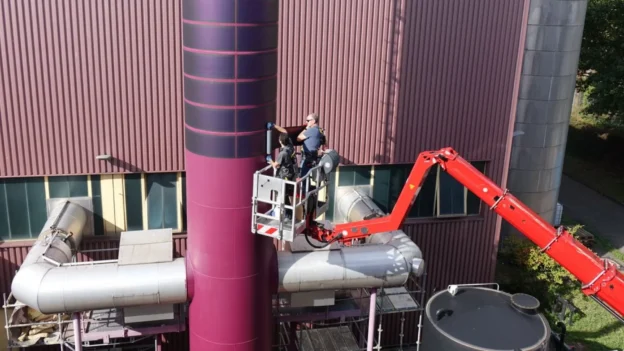Cologne-Bonn Airport has taken a firm step towards energy efficiency with the installation of a pilot plant based on solar film on the chimney of its cogeneration plant (CHP). (CHP). The initiative involves 80 adhesive technology photovoltaic modules developed by the company Heliatek, distributed over a 70 m² curved area facing south.
Impact and application of solar film at airport
The modules have been installed at a height of 27 meters, taking advantage of a space that would not normally be feasible for solar technologies. conventional solar technologies. technologies. Thanks to their flexible and lightweight design, these panels do not require additional substructures, which broadens their applicability on non-standard surfaces such as facades, curved roofs or industrial infrastructures.
According to official data, this pilot plant can generate up to 4,400 kilowatt hours per year, which is equivalent to the average energy consumption of a house. In addition, HeliaSol sheets stand out for their low environmental impact: they emit less than 10 grams of CO₂ for every kilowatt hour produced.
Thilo Schmid, chairman of the airport’s Board of Directors, emphasized that this technology is integrated into its sustainability strategy. “We are constantly looking for new opportunities to strengthen our environmental commitment.”
This action coincides with the recent publication of the airport’s third sustainability statement under the criteria of the German Sustainability Code. German Sustainability Code (DNK), corresponding to the 2024 fiscal year.
Energy transition with biomass, ice and photovoltaics
The installation of this pilot plant is part of a larger investment in energy infrastructure. The airport plans to reduce its dependence on fossil fuels through clean technologies such as ice thermal storage, heat pumps and expansion of its photovoltaic network.
In parallel, projects such as a new biomass-fired thermal power plant and the modernization of its power grid with a dedicated substation are being implemented.

